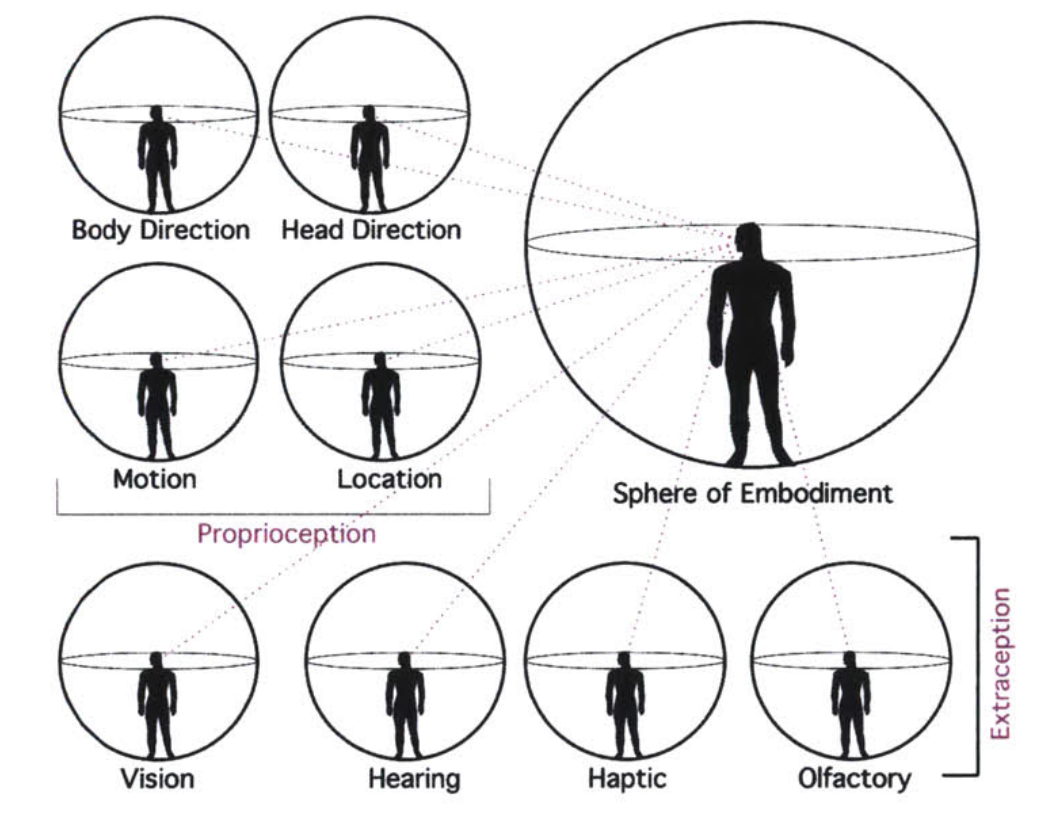Hallucination Machine: A Body Centric Model of Space Perception
MIT Thesis, 2014
In this thesis I present a novel approach to space perception. I provide a body-centric computational model, The Hallucination Machine, that integrates bodily knowledge with senses in a common modality which I call "the sphere of embodiment". Understanding the human experience of space is an important inquiry not only in the context of design and architecture, but in a broad range of scholarly disciplines where humans are the subject of study, whether as biological, social, or cognitive entities. My vision is that in order to create a knowledge of space shared through different disciplines and to develop tools and methods of scientific inquiry into the "human space," we have to conceptualize a space perception model that connects sensory experience with the actions and bodily knowledge of the actor. Implications for such a model have been proposed by phenomenologists in the philosophical realm and carried into psychology through concepts of embodiment, situated cognition, and enaction. The Hallucination Machine illustrates the inner-spatial relations between different senses and movements, collected through sensory and inertial recording devices of the machine which experiences space situated by its human carrier. Through this inquiry, I argue that all senses, including proprioception and orientation, are collapsed in one medium, a sphere of embodiment, in which they form a multimodal spatial experience and communicate through it. I demonstrate the practical implications of this medium through a set of experiments.














